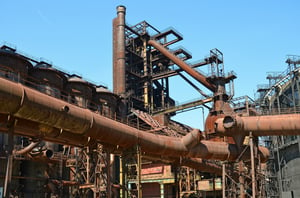Pensana Plc (LON:PRE) has announced the following update on the results from the exploration programme undertaken on the Coola licence, located 16 kilometres north of the Company’s state-of-the-art Longonjo rare earth project in Angola.
Having identified highly anomalous technology metals including rare earths, scandium and fluorite in soils surrounding the 7 500km2 Coola project in 2020, field exploration activities resumed in Q3 2021, and a range of very encouraging results has been reported from the Coola carbonatite and the recently identified Sulima West.
Highlights
- Twenty-two samples from a 4.2 km diameter ring structure at Sulima West, located 50 km from the Coola carbonatite, were all mineralised and returned values of between 0.6% and 10.6% TREO, averaging 4.2% TREO (NdPr average = 0.86%). The iron content in these rocks averaged 28% Fe and the Manganese averaged 5.6% Mn.
- Sulima West has been intersected by ten large exploration trenches up to 90 metres in length, coinciding with a large radiometric anomaly. The trenches are understood to have been excavated during 1960-61 but have not been followed up with modern exploration methods.
- Rock chip sampling of the 0.9 km diameter Coola carbonatite ring dyke returned values of between 0.6% and 4.9% TREO (average 2.6%). Soil geochemistry over the covered carbonatite returned values of between 0.37% and 13.18% TREO (average 3.21%).
- Mineralogical studies of the Coola carbonatite identified the rare earth mineral to be bastnäsite, which occurs as discrete veins, veinlets, and segregations within the carbonatite.
- Soil geochemistry over the fluorite-rich zone at Coola identified an area of 13 000 m2 with average fluorite values of 17% (Calcium Flouride) CaF2.
Exploration results include significant total rare earth oxide (TREO) values from the rock chip and soil sampling programmes completed in 2021 on Pensana’s Coola prospecting license (No. 059/02/01/T) in Huambo Province, central Angola.
Field activities in Q3 2021 focused primarily on the Coola carbonatite, which showed encouraging rare earth element (REE) scandium (Sc) and fluorite mineralisation, following the initial 2020 sampling programme. Subsequent follow-up work thereon included detailed geological mapping, soil and rock chip sampling, and augering of the central soil covered diatreme.
During this period, a visit was conducted at the Sulima West target, a radiometric anomaly located approximately 50km northwest of Coola, where a series of historic trenches and pits had been identified. Initial sampling of some of these trenches was completed during this visit.
Analytical results from these programmes have been received and the results of the work completed to date is summarised below:
Main findings at the Coola Carbonatite include:
- Geological mapping of the 0.9 km diameter Coola intrusive centre identified three main lithologies, namely a carbonatite ring dyke, fenite breccias with carbonate matrix, and a strongly oxidised and hydrated barite-rich rock.
- Rock chip sampling of the 20-50 m wide portions of the carbonatite ring dyke returned values of between 0.6% and 4.9% TREO (average 2.6%). Soil geochemistry over areas of soil covered carbonatite returned values of between 0.37% and 13.18% TREO (average 3.21%).
- Rock chip sampling of the breccia and oxidised barite-rich rock generally showed TREO grades of <1.0% TREO. Soil geochemistry over areas of soil covered breccia returned values of between 0.44% and 3.93% TREO (average 1.37%). Soil geochemistry over areas of soil covered oxidised and hydrated barite-rich rock returned values of between 0.28% and 8.26% TREO (average 1.84%).
- Mineralogical studies of the carbonatite identified the REE mineral to be bastnäsite, which occurs as discrete veins, veinlets, and segregations within the carbonatite.
- Scandium values of rock chip samples from all lithologies showed highest values of 67 ppm Sc. Scandium values in soil samples were highest in the breccia and oxidised and hydrated barite rich rock ranging from 30 – 220 ppm and averaging 92 ppm Sc. The scandium in the carbonatite averaged 25 ppm Sc.
- Soil geochemistry over the fluorite-rich zone at Coola identified an area of 13 000 m2 with average fluorite values of 17% CaF2.
- Augering of the regolith within the central diatreme generally showed low TREO grades of 0.3-1% TREO. Geochemistry indicated that the area is underlain by oxidised and hydrated fenite lithologies.
Main findings at the Sulima West target include:
- Sulima West is a 4.2 km diameter ring structure with a corresponding radiometric anomaly. Inspection of the satellite imagery of this ring structure identified 10 large trenches of about 90m length located in the western segment of the structure. These trenches correspond with the highest radiometric response.
- Little information on these trenches was available from the Geological Institute of Angola, however local anecdotal information reports that the trenches were excavated between 1960 and 1961 by the Companhia Minerais do Lubito and a further pitting programme was completed in 1972 by unknown parties.
- The trenches extend over an area of 40 000m2, are up to 90 metres in length and up to 3 metres deep. Four pits were located with depths of up to 10 metres.
- The trenches and pits are excavated in an iron/manganese-rich laterite of unknown thickness. The precursor lithology of the laterite is unknown but may represent a deeply weathered carbonatite.
- Twenty-two samples of the Fe/Mn rich material within the trenches returned values of between 0.6% and 10.6% TREO (NdPr range = 0.11-3.07%) and averaged 4.2% TREO (NdPr average = 0.86%). Fe content in these rocks average 28% and Mn averages 5.6%.
- The REE distribution is LREE enriched and is suspected to be monazite as the highest TREO values correspond to the most anomalous phosphorous values.
Pensana Exploration Manager, Grant Hayward, commented:
“We are extremely encouraged by the initial results from both Coola and Sulima West and are eager for the field season to commence to follow up on these exciting targets. Whilst it is early stage, these are very large structures reporting grades which are in some cases higher than those for Longonjo.
There are several radiometric anomalies and ring structures still to be evaluated, and we very much look forward to further exploration in 2022 with the easing of Covid related travel restrictions.”






































